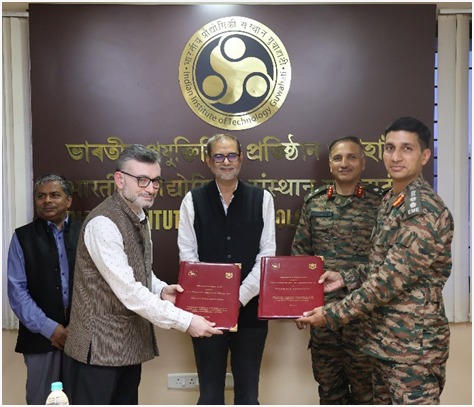The story of India’s steel industry is a testament to remarkable transformation, closely reflecting the nation’s broader economic journey. Once a modest player in global production, the sector has evolved to become the world’s second-largest steel producer, a status achieved by surpassing Japan in 2018. This shift is emblematic of India’s broader journey toward modernization, self-reliance, and sustainable industrialization. As Prime Minister Narendra Modi aptly remarked, the steel industry will play a “vital role” in fortifying the nation’s infrastructure as India pursues its vision of becoming a developed country.
The industry’s growth, particularly between 2019 and 2023, has been notable. During this period, India’s steel output expanded at an impressive 6% compound annual growth rate (CAGR), significantly outpacing China’s 1% and outshining global steel production, which saw a 1% decline. The past five years have witnessed a global increase in steel capacity by nearly 62 million tonnes, with India accounting for 6% of this growth. Notably, ASEAN and India are projected to account for nearly 89% of Asia’s steelmaking capacity additions.
This performance highlights the country’s strategic position in the global market, driven by domestic manufacturing pushes like ‘Atmanirbhar Bharat’. India is not just producing steel; it is crafting a roadmap to reduce import dependency and enhance export competitiveness.
Crucial to this success has been the National Steel Policy (NSP) 2017, which set ambitious targets to achieve a crude steel capacity of 300 million tonnes by 2030-31, with an expected production of 255 million tonnes of crude steel and 230 million tonnes of finished steel. The policy aims to make India self-sufficient in steel production while catering to both domestic and international markets, emphasising increasing capacity, enhancing quality, and adopting sustainable and energy-efficient practices.
Crude steel production grew from 109.137 million tonnes (MT) in 2019-20 to 144.299 MT in 2023-24, registering a robust growth of 13.4% over the previous year (127.197 MT in 2022-23). The domestic steel industry’s capacity expanded from 142.299 MT per annum in 2019-20 to 179.515 MT in 2023-24, supporting the production growth. Capacity utilization increased to 81% during the same period.
But India’s steel story isn’t merely about expansion in capacity—it is equally about rising domestic consumption. Total finished steel consumption grew from 100.171 MT in 2019-20 to 136.291 MT in 2023-24, indicating a strong domestic demand with a growth rate of 13.7% over the previous year. Industry projections, including a conservative 6% CAGR in steel demand through FY27, suggest that India’s steel sector is poised to meet—and perhaps exceed—demand.
This growth can be attributed to strategic policies and industry-led initiatives focused on capacity expansion and the development of high-quality steel products.
It needs to be highlighted here that Steel is a deregulated sector. The Government acts as a facilitator by creating a conducive policy environment for the development of the steel sector. As a facilitator, the government has taken steps to revitalize the Steel sector 360 degrees.
To boost steel production, a key initiative is Production Linked Incentive (PLI) Scheme, aimed at attracting capital investments and reducing imports, with an anticipated ₹29,500 crores investment and an additional capacity creation of 25 million tonnes for specialty steel. To make the steel industry globally competitive, in Budget 2024, the Government reduced the Basic Customs Duty on ferro nickel, a raw material, and extended the duty exemption on ferrous scrap until March 2026. Another key initiative is the Domestically Manufactured Iron & Steel Products (DMI&SP) Policy, which promotes ‘Made in India’ steel for Government procurement.
In addition to financial incentives, the government has taken decisive steps to enhance the industry’s environmental sustainability. The National Green Hydrogen Mission, spearheaded by the Ministry of New and Renewable Energy, integrates the steel sector into the broader goal of producing and using green hydrogen, contributing to the decarbonization of steel production. The Steel Scrap Recycling Policy further complements these efforts by increasing the availability of domestically generated scrap, thus promoting resource efficiency.
Today, India’s steel industry stands at a crucial juncture, ready for significant growth while embracing sustainability. Large-scale infrastructure projects and initiatives such as ‘Make in India’ and the PM Gati-Shakti National Master Plan are driving demand, ensuring continued growth. Strategic investments from both the government and private sector are set to boost productivity and competitiveness, helping the industry exceed the targets set by the National Steel Policy 2017. As India works toward becoming a $5 trillion economy, the steel sector will play a vital role in economic growth, job creation, and industrial development, setting a global benchmark for sustainable and inclusive progress.















